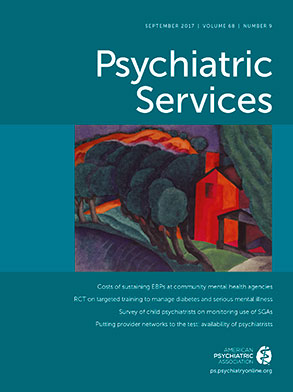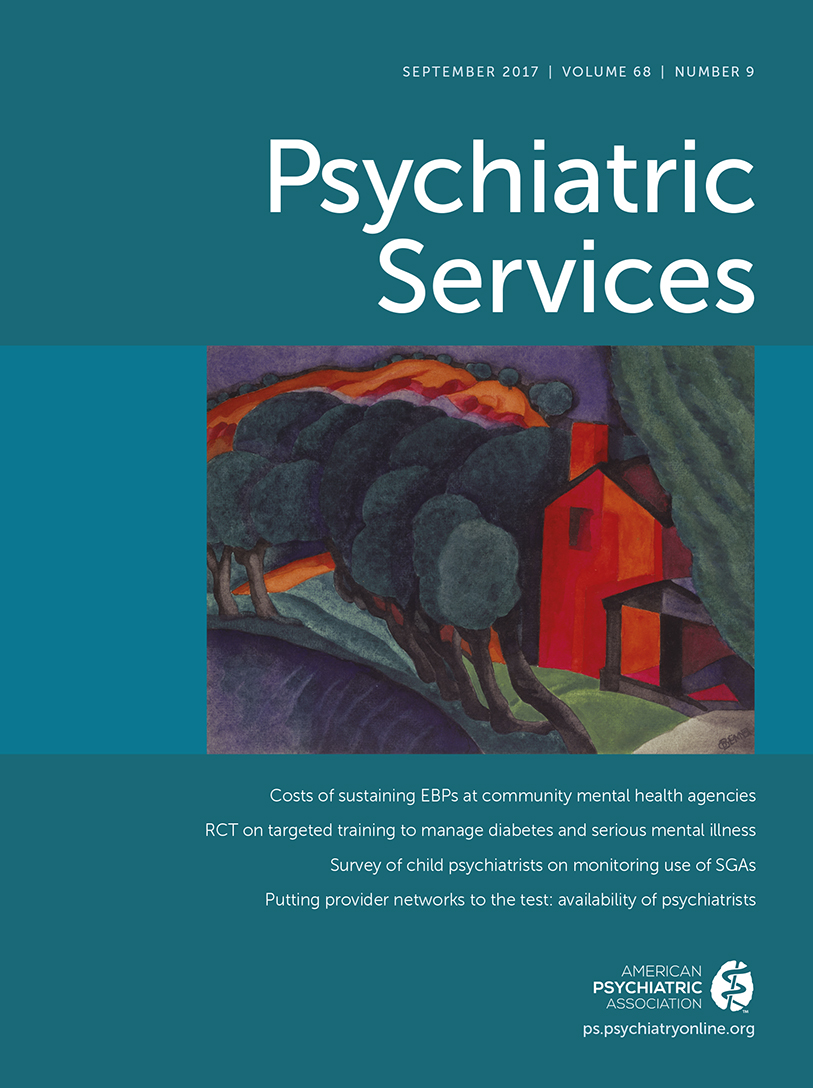Continuing medical education (CME) programs are the prevailing approach to enhancing primary care providers’ (PCPs’) knowledge in treating mental health and substance use disorders. Many patients seen in the primary care setting have both types of behavioral disorder, yet PCPs receive little training regarding these conditions and often report having insufficient access to specialty care (
1,
2). Inadequate treatment of behavioral disorders results in unnecessary suffering and multiple social and monetary costs to the individual and to society (
3).
CME aims to teach PCPs about new discoveries and best practices and to promote the uptake of this information into clinical practices. Moore and colleagues (
4) have described seven levels of possible CME outcomes. Levels 1 and 2 involve participation and satisfaction; levels 3 and 4 address learning. In order to achieve level 5, knowledge obtained in a CME activity must lead to improved clinical performance, demonstrated objectively or through self-report. Levels 6 and 7 require evidence of change in patient health and population health. Translation from CME program participation to incorporation into clinical practice—outcome level 5—appears to occur rarely, however, and there is concern that CME alone may be not be optimally effective in prompting practice change (
5–
7).
This breakdown in the translation of new learning into practice change results partly from the passive nature of the learning that occurs in most CME venues (
5). Many CME programs are delivered as formal lectures through conferences or Webinars, in which participation is primarily passive.
CME programs, while efficient in delivering current information, also do not adhere to the principles of adult learning theory originally explicated by Knowles and others (
8,
9), which hold that adults will learn only what they need to learn, their learning is primarily problem based rather than subject based, they have a rich reservoir of experience to inform their learning, they learn best in informal settings, and they want guidance rather than instruction.
The Extension for Community Healthcare Outcomes (ECHO) model (https://echo.unm.edu) provides an alternative approach to ongoing training for health care providers. ECHO uses videoconferencing to simultaneously connect multiple primary care teams with academic specialists (teleECHO programs) and builds teams’ capacity via mentorship and, most important, case-based learning (
10). ECHO aims to expand access to care by developing capacity to treat common, complex conditions in rural and underserved areas.
Growing evidence supports the effectiveness of the ECHO model (
11). Participating health care providers become more confident in their ability to deliver care for the condition that is the focus of the teleECHO program (
12). Care delivered by PCPs treating hepatitis C has been shown to be as effective as care delivered by academic specialists when the PCPs are supported through a hepatitis C teleECHO program (
13). Nursing homes supported by a geriatric teleECHO program reduced the use of physical and chemical restraints (
14).
The integrated addictions and psychiatry (IAP) teleECHO program was established in New Mexico in 2005 with implementation of the ECHO model to expand access to treatment for behavioral disorders (
10). Each week, primary care teams join via a two-hour videoconference with a “hub” specialist team at the University of New Mexico Health Sciences Center that includes an addiction specialist/internist, psychiatrist, licensed clinical social worker, and community health worker. The primary care clinic “spoke” participants include interdisciplinary clinical team members. Participation is free of charge, and learners may request no-cost continuing education credits (CME/CEU).
The IAP teleECHO sessions begin with a specialist offering a brief lecture on some aspect of mental health or substance use disorder care. The remainder of the session focuses on case presentations by participants who submit a deidentified description of a patient’s case in advance on a standard template and give a brief oral presentation during the teleECHO session. After the presentation, the facilitator elicits clarifying questions from participants and specialists. The facilitator next asks for discussion and recommendations, starting with other participants and then specialists. The facilitator summarizes the group’s input. TeleECHO sessions typically include two to five cases.
Participants who choose to claim CME/CEU credits complete an electronic survey after the teleECHO session. Beginning in June 2015, survey participants were asked if they had presented a patient case that day; how they rate the value of the clinical input received; whether the input changed their care plan, and if so, in what way; whether they learned something new from discussions of cases presented by other participants; and whether this information would be useful in caring for their own patients, and if so, in what way. Results were tabulated and frequencies calculated.
From June 2015 to May 2016, 104 individuals from five states and Canada participated. They came from community health centers, private clinics, and public health offices; departments of corrections and defense; the U.S. Department of Veterans Affairs; Navajo, Zuni, and Cherokee nations; public schools; academic medical centers; and specialty addiction treatment programs. They included physicians, nurses and advanced practice nurses, physician assistants, counselors and social workers, pharmacists, psychologists, public health officers, midwives, community health workers, medical assistants, and trainees.
Forty-one individuals seeking CME/CEU credit submitted 299 postsession surveys. In 84 of these surveys, respondents reported presenting a patient case, and 65 (77%) stated that the case discussion changed their patient care plan. In 70 of 81 surveys (86%), participants rated the value of the input they received as 5 (the best possible) on a scale of 1–5. In addition, 254 of 295 surveys (86%) indicated that respondents learned something new from cases presented by others, and 231 of 249 (93%) reported that the information they learned would be useful in caring for their own patients. (The denominator varies because not all respondents answered every question.)
Participants reported that they learned new knowledge related to diagnosis, behavioral and medical interventions, and resources outside of their practice (
Box). They also reported acquiring broader knowledge, such as self-awareness in patient interactions and the need to reduce stigma in the care of their patients.
Compared with traditional CME, the ECHO model adheres more closely to the principles of adult learning theory. For example, when learners present cases from their own practices, it ensures that learning is problem based and focuses on the presenter’s current need. Case presentations reflect knowledge that presenters already possess, so new teaching and learning begin at exactly the right point. Finally, feedback in a teleECHO session arises from relatively informal discussion by the group and consists of suggestions and guidance from the specialists and other participants, rather than of instructions for the presenter.
When examined in light of Moore and colleagues’ framework for CME evaluation, these data indicate that learning through the ECHO model achieves level 5, which is characterized by participants doing what the CME activity intended for them to be able to do in caring for patients. In the IAP teleECHO program, 77% of responses of those who presented a patient case reported that presenting the case and receiving feedback prompted them to change their patient treatment plan.
Over time, this case-based support and mentorship is likely to lead to medical providers’ increased knowledge of and confidence in diagnosing and treating behavioral disorders as well as to better patient outcomes. Other data indicate that application of the ECHO model can achieve at least level 6 (change in patient health) (
13,
14), and this study demonstrates that participants’ receptiveness to the input they receive during case presentations is a catalyst for their behavior change.
Unlike traditional telemedicine, the ECHO model results in “force multiplication,” with a few specialists mentoring many PCPs, who in turn provide enhanced care for large numbers of patients. The ECHO model has similarities to the well-studied chronic care model (
15) but does not rely on a single designated care coordinator in a primary care practice. In fact, by adding registry review by mental health specialists, an ECHO behavioral health program could be layered on top of the chronic care model.
In conclusion, ECHO participants greatly value input they receive during case discussions of patients with mental disorders or substance use disorders (or both) in teleECHO sessions, and they report that the process leads to treatment plan adjustment for their patients, consistent with Moore et al.’s level 5 impact of CME. ECHO is an easily replicable and flexible model that appears to expand access to high-quality care for behavioral disorders by supporting and mentoring PCPs, and it offers an improved method for providing CME. At a time when lack of treatment for behavioral health problems is causing national concern, ECHO provides a model to expand capacity for treatment.

